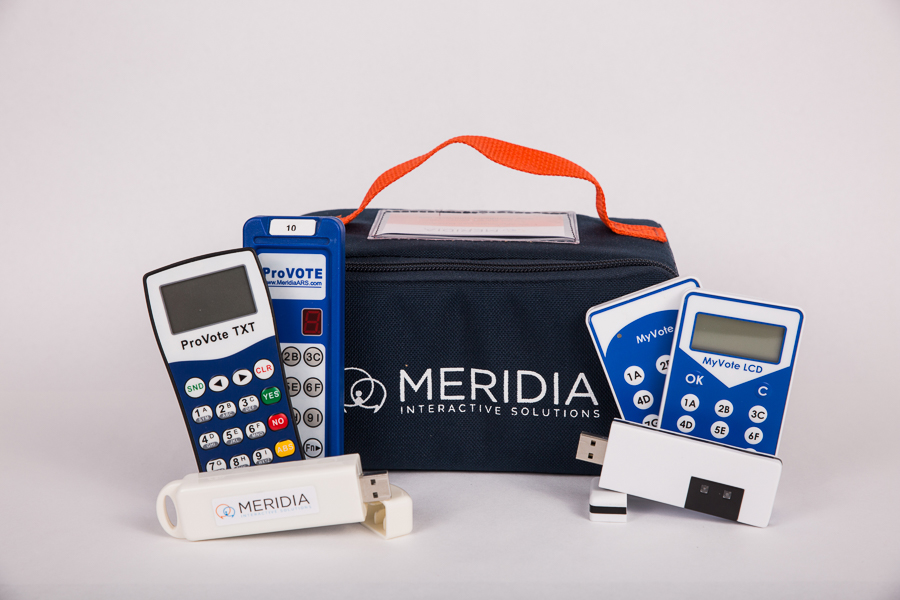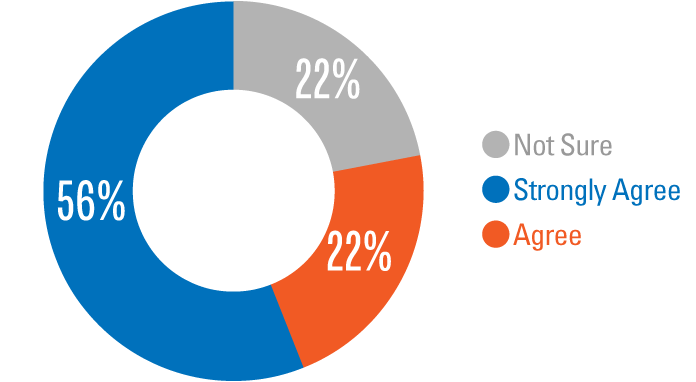Why Every Teacher Should Be Using a Classroom Response System
Student engagement is a priority for teachers who work hard to enrich the lives of their students through high-quality education. Today’s children have been raised with technology in all aspects of their lives, and the use of student response systems in the classroom can enhance learning and student engagement while erasing issues of peer pressure, shyness or embarrassment. A clicker system interface for student polling helps teachers track learning progress, helps students remain focused on educational materials and provides a wide range of active learning benefits for both students and teachers in the classroom.


What is a Classroom or Student Response System?
Audience response systems – also known as ARS or student response systems – have been in use for years, and they are finding new benefits for classroom instruction in unexpected ways. The system consists of small, handheld wireless units that allow each student to vote on a topic, answer a question or state an opinion based on multiple-choice options without revealing their personal response to other students in the classroom. A central software receiver records the responses and creates an immediate ability to create charts and graphs. The teacher can choose to share the group responses, charts and graphs with the classroom, or keep them to his or herself to guide the progress of instruction.
Real Time Feedback and Agile Teaching
With real-time feedback and increased odds of honest responses, teachers can make adjustments to the syllabus to ensure that students are comprehending the material. A simple quiz question can reveal the number of students who are not grasping the instruction, and this allows teachers to backtrack, reinforce and adjust teaching to meet the needs of all students. This type of live, flexible instruction has been referred to as “agile teaching.” New lines of discussions can also be developed when student polling results are received. With all students easily able to participate, instruction can be more inclusive of all students, even those who tend to fall behind.


Live Polling: Share the Results or Select Privacy
With classroom response systems, teachers can choose to show students general results of live polling but not disclose the individual polling answers from each student. However, teacher access to individual polling results can provide invaluable information about students who may be struggling to learn the topic. Teachers can then address these issues individually and privately with their students without concerns about embarrassing the student in front of the rest of the class.
Creative Uses for Student Response Systems
The benefits of using student response systems are clear, but there are many creative uses for these live polling systems as well. Unique uses include:
Improving Student Engagement
With creative uses and the ability to immediately engage students with real-time results, teachers can keep students on track by requesting participation with an active learning system. Sleeping or daydreaming through lectures will be diminished, and students will remain aware and actively absorbing the material that is presented. Impromptu use of the classroom response system can help teachers reinvigorate a low-energy classroom, as well as pre-planned quizzes and questions to keep students alert and engaged.


Mobile Participation with Smartphones and Tablets
Although handheld clickers are an easy tool to utilize in the classroom, large groups or remote students can also participate in audience response systems by the use of software that turns any laptop, tablet or smartphone into a live polling device. This is an ideal system for large university-level lecture halls, online classes or field trips. Students are comfortable with the technology and can easily respond to teacher questions with use of a mobile device.
Improving Honesty by Not Following the Crowd
Researchers are studying the effects of classroom response systems, and the results point to undeniable benefits. In one study, experiments included 22 university classrooms and 1,100 students. The researchers determined that students were apt to follow the crowd when raising their hands to answer questions. With a student response system, this issue is not relevant and does not influence classroom instruction. Honest answers that are free of peer pressure will guide the classroom learning process in a more authentic direction.


Efficient, Convenient Learning Assessment
While multiple-choice instruction does have its limitations in terms of student polling creativity, learning comprehension and problem-solving skills, it is a quick and convenient option that can prepare students for more in-depth exams that include essays and open-ended questions. Multiple-choice questions can help teachers and students recall facts, express opinions, collect data, interpret important concepts and assess homework compliance. Although this is not the only assessment tool that may be required for grading student progress and participation, live polling can cover many aspects of learning.
Live polling systems increase student engagement and provide teachers with many opportunities to gauge student learning, collect data and prepare students for success in the classroom. This useful tool’s benefits are many, and students of all ages will enjoy consistent, uninfluenced learning when assisted with this advanced technological tool.

